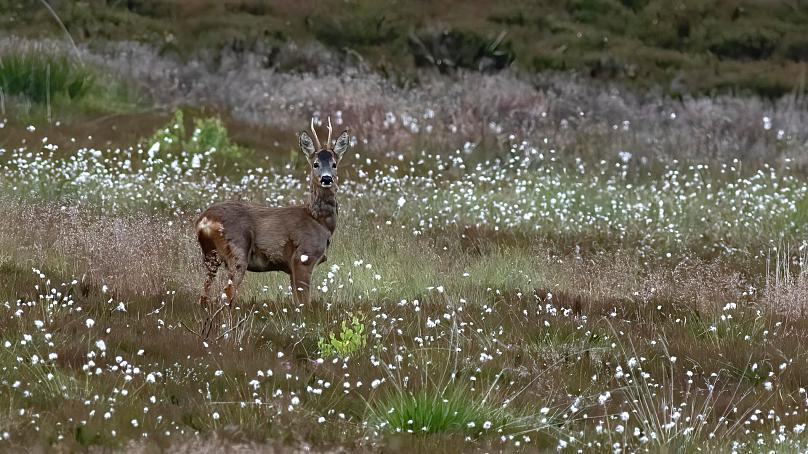
🏴 Scottish villagers buy nature reserve
Scottish villagers buy a nature reserve and now they are hoping to double its size, making it 4000 hectares.
Share this story!
Last year, the Scottish community Langholm, which lies near Gretna Green, raised £3.8 million (€4.5 million) and bought around 2100 hectares of land from the Duke of Buccleuch. Now, they are fundraising another £2.2 million (€2.6 million) to buy an adjoining equally sized piece of land. Their goal is to maximize the benefits for people, the climate and nature. Also, the site lies on peatland which is very important for the environment.
The Scottish Land fund (funded by the government for community takeovers) granted the Langholm Initiative £1 million (€1.2 million) on Thursday the 16th. Thanks to the grant, Langholm can reach its target by July 31.
200 000 hectares of Scottish land is owned by communities. Much of it is Highlands and islands like for example the Hebridean Isle of Eigg. It’s a bit more uncommon for lands in regions in the south like for example Dumfries and Galloway to be community owned.
“It’s a long-term shift, because there’s been one landowner that’s owned all the land around here for centuries. So it’s quite a shift in terms of how people see it,” Jenny Barlow, estate manager of Tarras Valley Nature Reserve tells Euronews.green.
According to Barlow, they have already started to see species return that haven’t been spotted in decades. For example, golden eagles have visited from the South of Scotland Golden Eagle Project.

"We're actually finding species that people didn't know existed in the region," says estate manager Jenny Barlow.
Before the buyout, the location was already a Special Protection Area for hen harries and now it has become an even safer breeding ground for the birds. Soon a live camera will let people watch the progress of chicks in the five nests built this year. To help protect the birds from persecution, charity partners Hen Harrier Action and RSPB are satellite tagging the birds.
In order to set a baseline to see how the land is developing, which is very important for the development trust, the team just completed a “BioBlitz”. A “BioBlitz” is a big biological community-led survey to assess all the species on the Langholm Moor reserve.
“The fundamental of it is that we know that to have that impact for nature, we need scale,” says Barlow. “That bigger, better joined up theory for nature conservation and restoration is something we can be really ambitious with, because of the scale that we've got and the mix and diversity of habitats.”
Peatlands are priceless for the environment. According to Euronews.green, they lock away an estimate of 3 billion tonnes of greenhouse gas which is an equivalent to all of the country’s forests plus those of France and Germany.
One of the initiative's key plans is to restore the peatland which isn’t in the best shape. They want to ensure it remains a huge carbon sink. Besides this, the team is also working with the Woodland Trust to remove some conifer plantations and replace them with native trees.
Barlow explains that 10 years ago the area was heavily grazed and now trees have already started to regenerate all over the landscape.
“It’s incredible to see how, when you give nature a chance, it starts to rebalance and restore. Only a helping hand is needed,” she says.
By becoming a premium supporter, you help in the creation and sharing of fact-based optimistic news all over the world.


